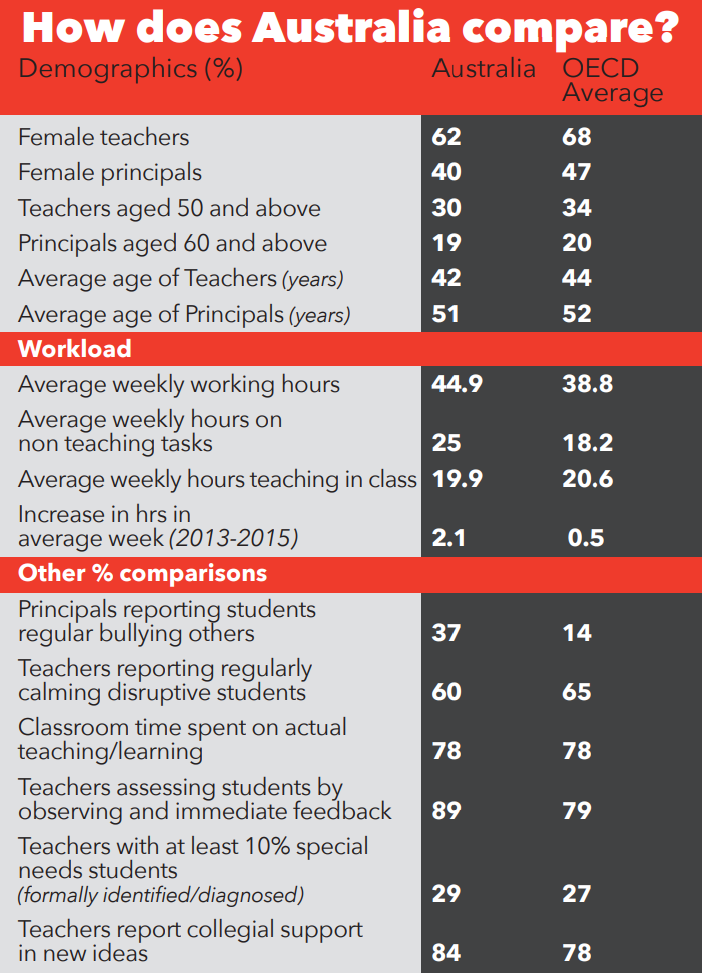The OECD Teaching and Learning International Survey (TALIS) is an international, large scale survey of lower secondary school teachers, school leaders and the learning environment in schools. IEU Victoria Tasmania Branch Assistant Secretary Cathy Hickey reports on the similarities and differences in the 2018 data for Australia and the OECD country averages on a number of key issues, including demographics, workload and professional development.
The TALIS survey is carried out every five years in 48 countries/economies and randomly selects 200 schools in each country (20 teachers and one school leader from each school).
It asks teachers about their working lives in schools covering everything from their school environment and how they interact with colleagues to their teaching practices and participation in professional learning. It also covers the experience of school leaders. While there are a number of similarities in the findings, the figures (right) also highlight some interesting differences.
Career and professional issues
One interesting difference was that teaching was the first choice career for 58% of teachers in Australia and for 67% (70% of women, 59% of men) in OECD countries and economies participating.
However, in terms of why they joined the profession, around 90% of all teachers in the survey (at least 93% of Australian teachers) cited the opportunity to influence children’s development or contribute to society as a major motivation.
Some particularly worrying data was the low percentages of novice teachers (in their first five years) who were assigned a mentor (37% in Australia and 22% average OECD)
In terms of professional development, teachers across the OECD report that professional development based on collaboration and collaborative approaches to teaching is among the most impactful. Teachers in Australia seemed somewhat more satisfied with their training and a higher percentage reported a positive impact on their teaching practice (92% compared to OECD 82%). However, the same lack of PD opportunities was identified by Australian and other OECD countries – in developing advanced ICT skills, skills for teaching in multicultural/multilingual settings and students with special needs.
While school leaders across countries have a higher level of educational attainment than teachers (63% holding a Masters compared to 44% of teachers), the number undertaking specific leadership training is low, with the Australian percentage much lower than the OECD average. 54% of principals (30% of Australian) completed school admin/principal training. 54% of principals (43% of Australian) completed instructional leadership training.
A key aim of TALIS is to help policy makers review and develop policies that promote the teaching profession and the best conditions for effective teaching and learning. This first volume entitled Teachers and School Leaders as Lifelong Learners was published in June this year. A second volume of the 2018 TALIS Report, Teachers and School Leaders as Valued Professionals will be published in early 2020.



































































































































